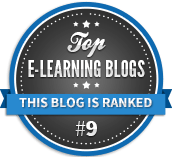Webinar Recap: Laying the Foundation for L&D Amidst Organizational Chaos
Key Takeaways:
|
Dr. Jill Stefaniak’s recent webinar, “Laying the Foundation for L&D Amidst Organizational Chaos,” addressed the critical challenges faced by Learning and Development (L&D) professionals, and outlined valuable insights into how L&D pros can identify and address the causes of what Dr. Stefaniak calls, “organizational anarchy.” She also provided attendees with tips and best practices for navigating ambiguity, misalignment, and inconsistency within their organizations.
Watch the full webinar below, or scroll on to review key takeaways:
Understanding ‘Organizational Anarchy’
Dr. Stefaniak began her session by discussing “organizational anarchy.” Characterized by unclear leadership, changing strategic plans, and fluid participation, this phenomenon is unfortunately pretty common in the modern workplace and poses significant challenges for L&D professionals. “Organizational anarchy,” according to Dr. Stefaniak, can make it difficult to plan and execute long-term initiatives effectively.
So what can L&D professionals do to navigate big changes? Dr. Stefaniak used her time to advocate for building an L&D blueprint that can withstand structural, cultural, and external changes. Let’s take a look at the L&D best practices she discussed:
L&D Best Practices for Addressing Organizational Change
-
Prioritize Durable Skills: Dr. Stefaniak emphasized the importance of focusing on durable skills such as communication, critical thinking, and problem-solving. These skills remain relevant despite frequent changes in organizational priorities. By prioritizing these timeless skills, L&D can remain relevant and valuable even as organizational priorities shift.
-
Communicate and Gather Continuous Feedback: The webinar highlighted the need for L&D professionals to establish a robust foundation through stakeholder mapping, communication plans, and pulse surveys. “Identifying and monitoring who can block, enable or influence LND in your organization is crucial,” Dr. Stefaniak stated. By strategically engaging with these stakeholders, L&D professionals can better anticipate and manage the impact of organizational anarchy on their initiatives.
-
Build Relationships: Dr. Stefaniak stressed that effective communication and building multiple lines of communication are crucial for overcoming the challenges posed by organizational anarchy and leadership turnover. “We also have communication plans. So what are those scheduled communication updates that we can provide to all of our stakeholders when different things are going on?” she explained. Regular updates and clear communication can help maintain stakeholder engagement and ensure that L&D efforts are aligned with organizational goals.
Dr. Stefaniak also emphasized the importance of recognizing and engaging with informal decision-makers within the organization. “Observing informal decision makers is crucial. This means looking at who the people are within your organization that have a lot of influence, that could see the value and utility of what L&D brings to the organization and can be mentioning that in conversations, to let people know [how L&D] can be used strategically to support changes within the organization.”
-
Align L&D with Organizational Goals: The webinar underscored the importance of L&D professionals being proactive in aligning their efforts with organizational objectives and demonstrating the return on investment (ROI) of their programs through data and metrics. Dr. Stefaniak suggested that L&D should not be seen as a reactive service but as a strategic partner, and advised L&D professionals to anticipate how various stakeholders might interface with L&D initiatives: “I think it’s being able to be that observer, anticipating alliances, anticipating rifts, and trying to figure and plan ahead of time, especially when we’re engaging in meetings with our different stakeholders.”
-
Demonstrate Relevance with Customized Learning Paths and Cross-Functional Programs: Strategies such as customized learning paths and cross-functional learning programs were discussed as effective measures to mitigate employee resistance, burnout, and siloed departments. Dr. Stefaniak noted that “Customized learning paths can help employees see the value and the utility of what L&D can bring to the organization.”
Your L&D Questions: Answered
During the webinar, Dr. Stefaniak answered a number of common questions that L&D professionals have about managing organizational anarchy and workplace ambiguity. Here are a few of her responses to these L&D FAQs:
-
What are durable skills, and why are they important? Durable skills are timeless competencies such as communication, critical thinking, and problem-solving that remain relevant despite changes in organizational priorities. They are crucial for L&D professionals to focus on to maintain the relevance and value of their initiatives.
-
How can L&D professionals build a strong foundation amidst organizational chaos? By conducting stakeholder mapping, developing communication plans, and conducting pulse surveys, L&D professionals can establish a robust foundation that helps them navigate organizational anarchy effectively.
-
Why is effective communication critical in L&D? Effective communication helps maintain stakeholder engagement, ensures alignment with organizational goals, and alleviates resistance to L&D initiatives. It is essential for building and maintaining multiple lines of communication to survive leadership turnover.
Ready to Build a Sustainable L&D Program? Take the Next Step
To further enhance your L&D strategies and build a resilient foundation for learning, download our latest guide: ‘Creating an L&D Blueprint:Build Adaptable Learning at Scale.’




